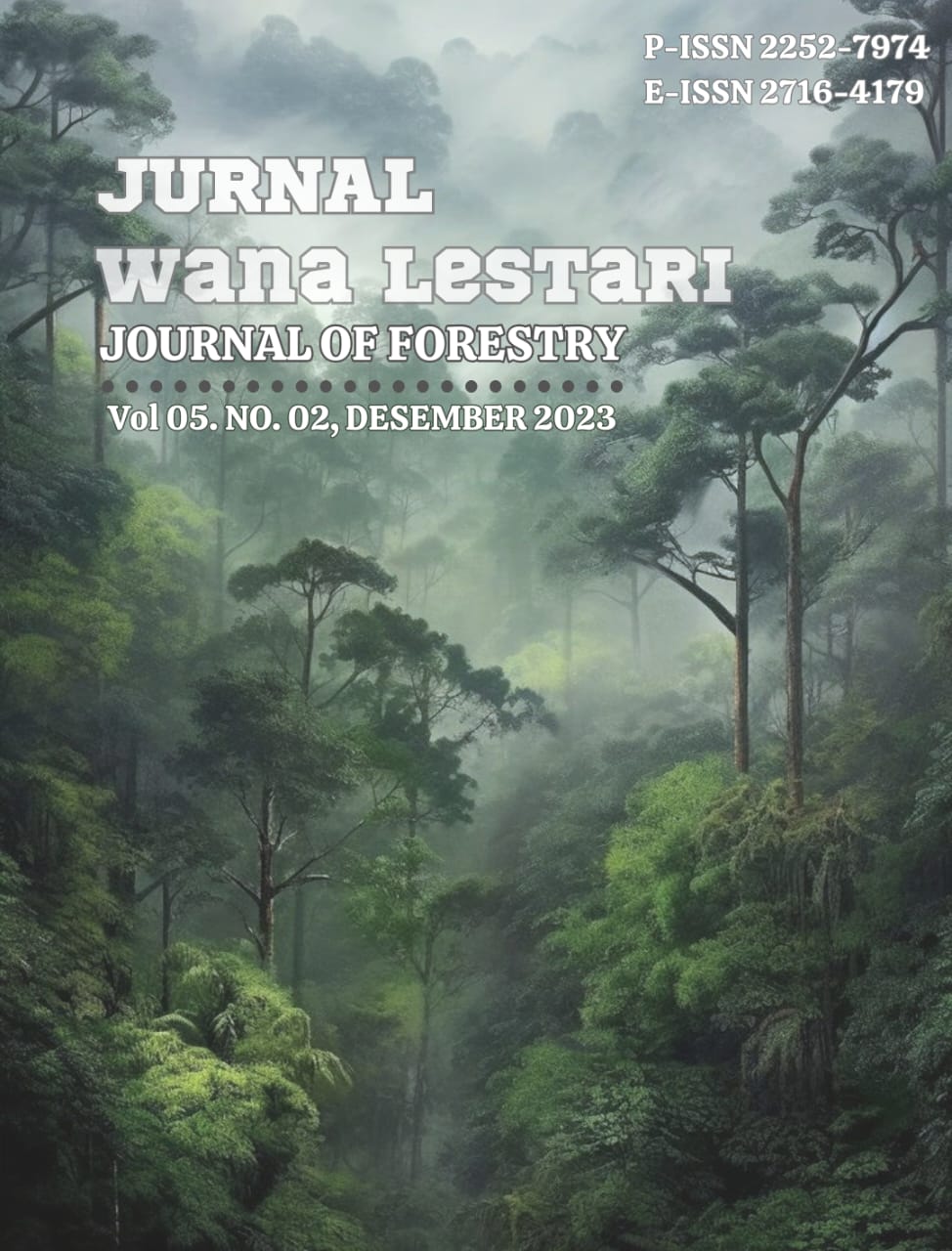IDENTIFIKASI TANAMAN DALAM SISTEM AGROFORESTRI DI DESA TIGARAS KABUPATEN SIMALUNGUN
Abstract
One form of land use around forest areas is a program to develop agroforestry programs. Agroforestry is one of the possible land management systems that can be offered to overcome problems arising from land use change and, simultaneously, to overcome food problems. In addition, the existence of agroforestry will provide ecological and economic benefits. The people of Tigaras Village, Simalungun Regency, have used the land by planting various types of plants, both forestry plants, plantation crops, and crops. Based on the identification results, multiple kinds of plants have been developed, including 11 types of agroforestry plants, namely Ingul (Toona sure), Mango (Mangifera indica), Avocado (Persea americana), Durian (Durio zibethinus murr), Guava (Psidium guajava), Ketapang (Terminalia catappa), Pinus (Pinus merkusii), Coffee (Coffea), Cloves (Syzygium aromaticum), Rimbang (Solanum torvum sw) and Sugar Palm (Arenga pinnata merr.). The highest Important Value Index (I.V.I.) at the tree level was found in Mango tree species at 59.74%, while the lowest I.V.I. was in Clove tree species with a value of 5.20%. The I.V.I. at the highest pole level was found in the Mango tree species at 108.14%, while the lowest I.V.I. was found in the coffee plant species with a value of 2.90%. At the same time, the level of species diversity is at a moderate level. Forms and Patterns of Agroforestry in Tigaras Village is a simple agroforestry combining forestry, agricultural, and plantation crops.

 Tri Astuti(1*)
Tri Astuti(1*)







